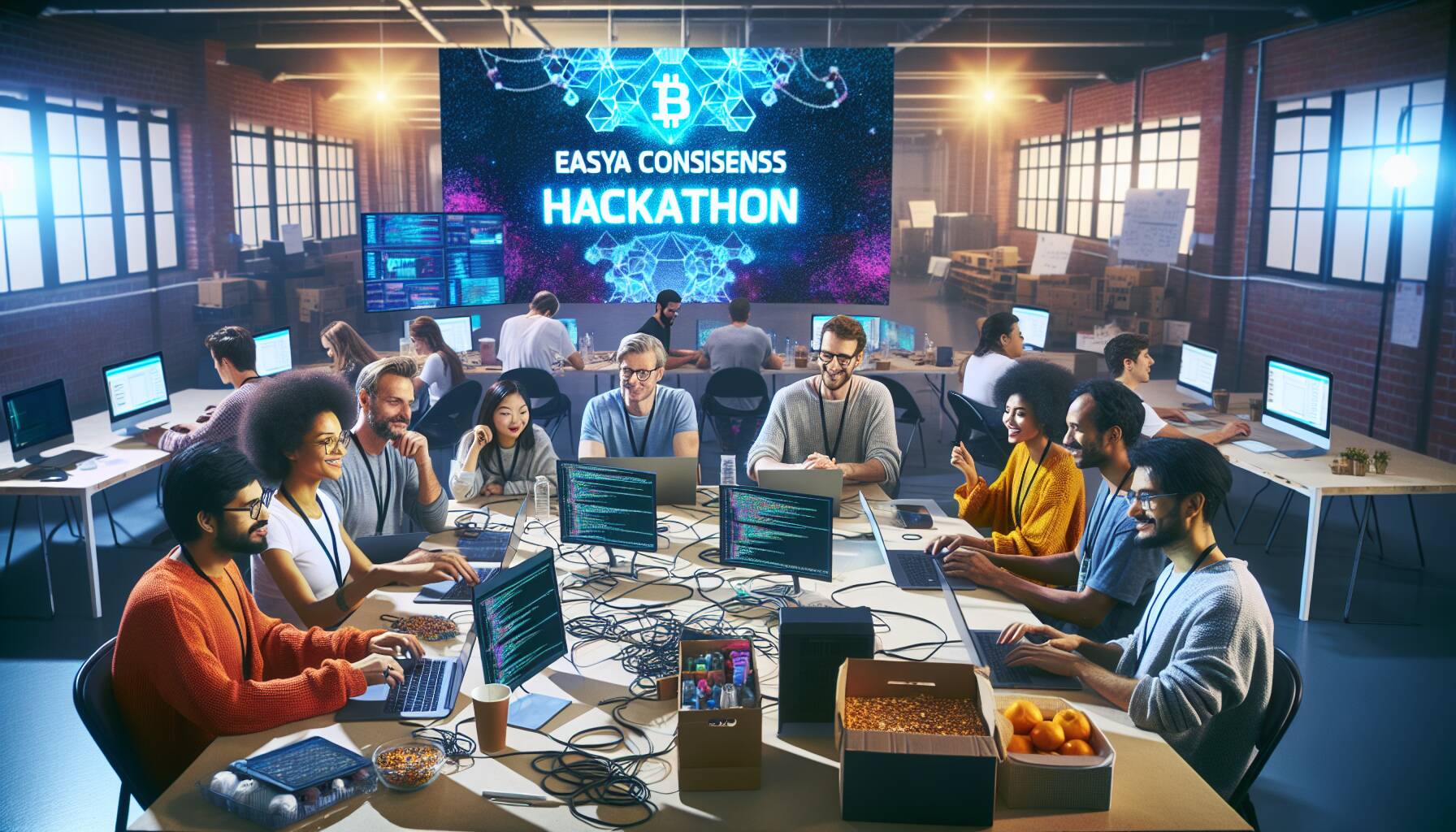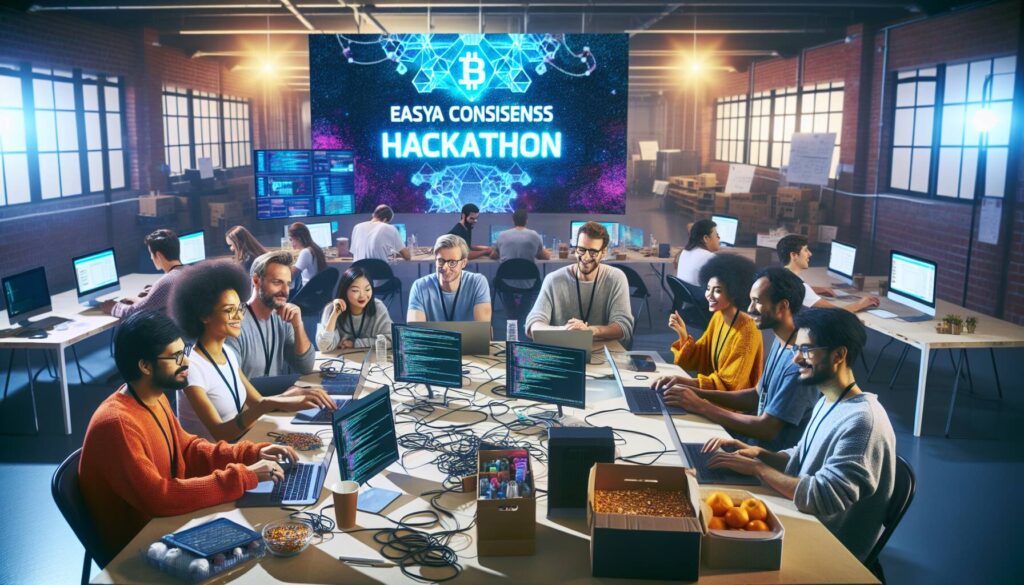The EasyA Consensus Hackathon, hosted in Toronto from May 14-16, has emerged as a pivotal event in the North American blockchain landscape, marking its place as the largest hackathon of its kind in history. This impressive gathering, organized by brothers Phil and Dom Kwok, showcased the talents of over 1,000 vetted developers, all eager to prove their skills in a rapidly evolving industry.
During the hackathon, participants presented a range of innovative projects, with significant potential funding up for grabs from five prominent blockchain networks: Aptos, Stellar, Polkadot, Bahamut, and Forte. The event reached a thrilling peak when the team behind ApTap, the winner of the Aptos track, received an invitation from Universal Studios to present their project to executives in Orlando. “That was crazy,” expressed Phil Kwok, highlighting the excitement and opportunities generated by the competition.
With a community of over 1 million developers, EasyA is recognized as one of the leading Web3 learning platforms, having organized more than 30 hackathons since its inception in 2019. The winners of this hackathon were evaluated based on the mission statements of their respective blockchain networks, fostering a focus on long-term project development rather than one-off competition wins. Dom Kwok stated, “Developers don’t just come to these hackathons, win prizes and then go on to the next one.” This perspective underscores the commitment to building sustainable projects that add lasting value to the cryptocurrency ecosystem.
Some standout winners included CycleBuddy on the Stellar track, an application designed for women to track their menstrual cycles while earning tokens, and Sutanpu on the Polkadot track, which allows travelers to mint NFTs of their journey. The prizes were not limited to these projects, as many other innovative ideas received recognition for their potential impact in the blockchain space.
“That’s why so many of the projects are really outstanding this year,” said EasyA chief operating officer, Dom Kwok.

The EasyA Consensus Hackathon: Key Highlights
The EasyA Consensus Hackathon was a significant event in the blockchain community, showcasing innovation and collaboration among developers.
- Largest North American Blockchain Hackathon: Hosted from May 14-16 in Toronto, attracting over 1,000 vetted developers.
- High-Quality Projects: Emphasis on experienced developers led to outstanding project submissions.
- Substantial Prizes: Millions of dollars offered by five prominent blockchain networks (Aptos, Stellar, Polkadot, Bahamut, Forte).
- Notable Recognition: Winner ApTap was invited to showcase its project to Universal Studios’ executive team.
- Community Engagement: EasyA fosters a developer community of over 1 million, hosting over 30 hackathons since its inception in 2019.
- Focus on Long-Term Development: Hackathons aim to promote sustained growth and value in the crypto space rather than short-term wins.
- Diverse Winning Projects: Projects ranged from financial tools to health trackers and travel apps, demonstrating versatility in blockchain applications.
“The bulk of the reward prize is actually distributed further down the line.” – Dom Kwok
Comparative Analysis of the EasyA Consensus Hackathon
The EasyA Consensus Hackathon, held in Toronto, stands out in the blockchain community not just for its scale but also for the quality of projects it promotes. With over 1,000 vetted developers participating, the event sets a high bar for skill and innovation, unlike many others in the crypto space that often attract a wider but less experienced audience. This rigorous selection process gives EasyA a competitive advantage by fostering a deeper pool of talent, which in turn elevates the quality of submissions.
In comparison, other hackathons like ETHGlobal and Chainlink’s events tend to prioritize inclusivity, which can sometimes dilute the caliber of projects presented. While these events may attract larger numbers and foster community engagement, they may not produce projects with the same level of sophistication as those seen at EasyA. The potential downside to EasyA’s focus on elite developers is that it may inadvertently create barriers for newcomers, limiting diversity in project perspectives and innovation approaches.
The presence of heavyweights like Universal Studios scouting projects adds significant prestige, offering winners more than just monetary prizes—there’s a unique opportunity for visibility and real-world application. However, this could also set a high-pressure environment for participants. Candidates seeking recognition in the competitive tech landscape may face the risk of burnout, as the demand for excellence is markedly raised.
Additionally, the continued funding model for winning projects ensures that the competition isn’t just a one-off event—developers are encouraged to build sustainably, which is a substantial advantage for long-term industry development. In contrast, some hackathons offer immediate rewards but lack follow-up support, potentially leading to promising ideas fading away without sufficient backing.
This long-term vision may greatly benefit startups and developers looking for ongoing support rather than a fleeting win, positioning them more favorably for future investment. However, emerging developers or those with less experience might find it challenging to commit to such long-term projects if they endure initial setbacks.
Overall, the EasyA hackathon paints a promising future for serious developers while simultaneously presenting challenges for those who may not meet its high standards. Its strategic partnerships and commitment to continued funding could foster a robust ecosystem of innovative solutions, but it may also risk alienating newer participants in the broader blockchain community.

















